How to Kickflip: Impress Your Friends and Up Your Skateboarding Game
Whether you're a seasoned skateboarder or just starting out, learning to kickflip is an essential trick to have in your arsenal. Not only does it look cool, but it's also a great way to impress your friends and challenge yourself. Before we dive into the details of how to do kickflip, let's first define what it is.

What is a Kickflip?
A kickflip is a skateboard trick where the rider flips the board 360 degrees along its length axis while jumping. It's a fundamental trick in skateboarding and is often one of the first tricks that riders learn after mastering the ollie.
While it may seem daunting at first, with practice and patience, anyone can learn to kickflip.
History and Evolution of Kickflips
One of the most iconic and beloved tricks in skateboarding. But where did it come from? Let's take a brief look at the history and evolution of this classic flip trick.
We can trace the roots of the kickflip back to the freestyle skateboarding of the 1970s. Skaters like Rodney Mullen and Curt Lindgren were pioneering new tricks that involved flipping the board with their feet while standing on it. These early flip tricks were the foundation for what would become the modern kickflip.
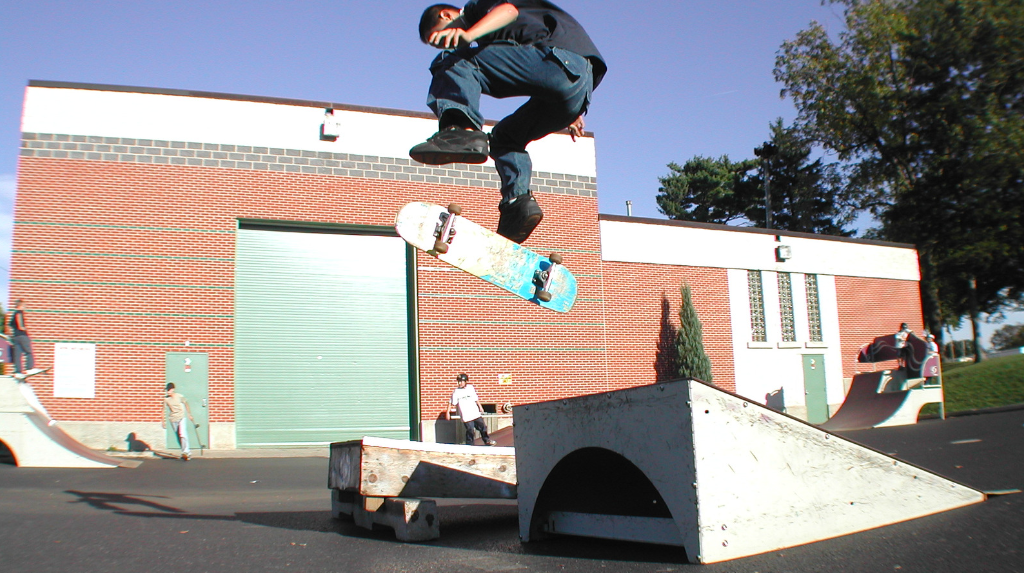
Skaters like Mike McGill and Natas Kaupas were pushing the boundaries of what was possible on a skateboard, and the kickflip was a key part of quality of those services in their repertoire.
Over the years, the toe side up kickflip has evolved and spawned a number of variations. The frontside 180 kickflip, also known as the "magic flip," combines the kickflip with a frontside 180. The backside 180 kickflip is a similar trick, but with a backside 180 instead.
The varial flip involves spinning the board 180 degrees in addition to the kickflip. And of course, there's the 360 flip, which takes things to the next level by adding a full 360-degree spin to the mix of board flips.
Despite all these variations, the basic mechanics of the kickflip remain consistent. It's a simple yet elegant trick that involves a precise combination of kicking the board with your front foot and a timely flick of your back foot, resulting in the board's spin.
Through continuous practice, one can not only learn to kickflip but also develop and improve new techniques and styles within this fundamental trick, ensuring it never loses its appeal.
The Basics of a Kickflip
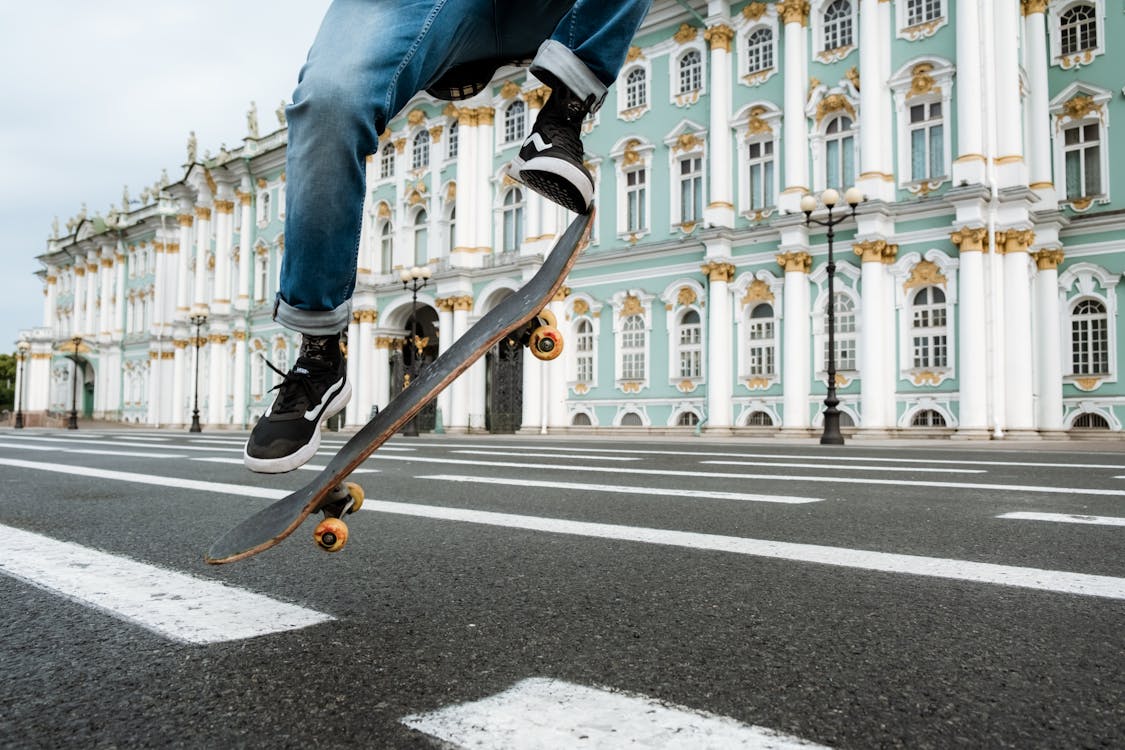
The kickflip is a skateboarding trick in which the skateboarder makes the board do a 360-degree flip along its longitudinal axis while in mid-air. It is considered one of the most essential tricks in skateboarding, and it is often seen as a rite of passage for skaters.
To do a kickflip, the skater starts by placing their front foot on the edge of the skateboard, just behind the front bolts. The foot is placed on the tail of the board. The skater then pops the tail of the board off the ground, while simultaneously flicking the front foot off the edge of the board.
This causes the board to flip in the air. As the board flips, the skater brings their knees up to their chest to help control the rotation. Once the board has completed a full rotation, the skater lands on the board with both feet.
The kickflip is a difficult trick to learn, and it takes a lot of practice to master. However, it is a very rewarding trick to learn, and it is a must-have for any serious skateboarder.
Foot Placement and Flicking Technique
When it comes to placement for a kick flip, your back foot should be positioned on the tail of the board, while your front foot should be angled slightly towards the nose with the ball of your foot just behind the front bolts.
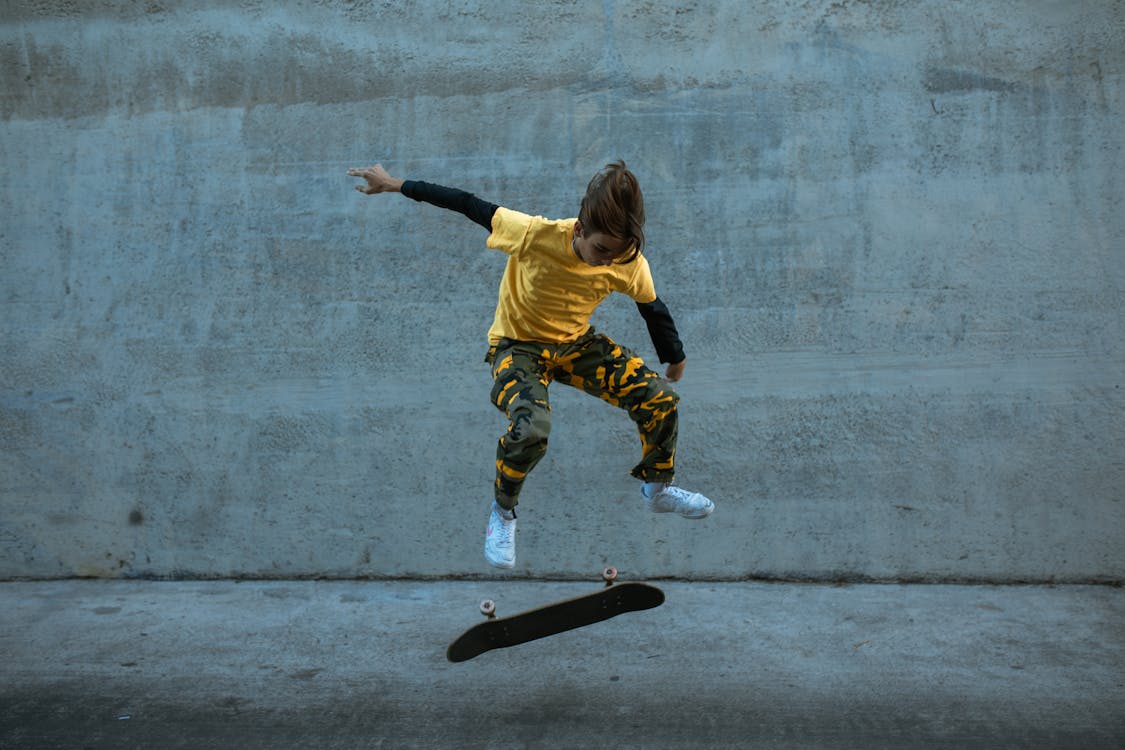
Foot Placement
-
Back Foot: Position your back foot so that it rests on the tail end of the skateboard, ensuring that your heel extends slightly over the edge, not fully supported by the board.
-
Front Foot: Angle your front foot slightly towards the nose, with the ball of your foot just behind the front bolts.
Flicking Motion
-
Slide: Use the side of your foot to slide off the edge of the nose.
-
Kick: Simultaneously kick your front foot outwards and downwards.
Tips and Additional Notes:
-
Practice the flicking motion off the board to get a feel for it.
-
Start with a small flick and gradually increase the power as you get more comfortable.
-
Aim to flick the board as close to the center as possible.
-
Keep your feet level and your weight evenly distributed.
-
Pop the board hard with your back foot as you flick it.
-
Follow through with the flicking motion, bringing your front foot back to the board.
-
The kick flip is a difficult trick to learn, so don't get discouraged if you don't land it right away.
Catching and Landing
As with any skateboarding trick, the key to successfully landing a kickflip is to commit and stay focused.

Catching
-
As the board rotates, position your front foot to catch the edge of the board where your back foot initially was.
-
Keep your front foot relaxed and ready to adjust to the board's rotation.
-
Aim to catch the board as close to the center as possible for a balanced landing.
Landing
-
Upon catching the board, maintain a centered stance with your shoulders level and your weight evenly distributed.
-
Bend your knees slightly to absorb the impact of landing.
-
Keep your eyes focused on the landing surface and roll away smoothly.
Tips and Additional Notes:
-
Practice catching the board while it's stationary to get a feel for its movement.
-
Start with a small pop and gradually increase the height as you get more comfortable.
-
Focus on timing your catch with the board's rotation to ensure a smooth landing.
-
Don't look down at your feet while landing; keep your eyes focused on the landing surface.
-
Landing a kickflip consistently requires practice and patience.
-
Break down the trick into smaller steps and focus on mastering each step before moving on to the next.
For a comprehensive visual guide on mastering the kickflip, you can watch 'How to Kickflip' by the RIDE Channel on YouTube.
Additionally, for more in-depth tutorials and tips on skateboarding, Braille Skateboarding offers a wealth of resources on their website. They provide detailed instructions, videos, and articles that can help skaters of all levels improve their skills.
Taking Your Kickflip to the Next Level
Now that we've got the basic kickflip down, it's time to take it up a notch. Some tips and tricks to help you master variations, overcome obstacles, and add some style and flair to your kickflips.
Mastering Variations
As you get more comfortable with the basic kickflip, experiment with your heel positioning. Letting your heels hang slightly off the board's edge can give you the leverage needed for tricks like the heelflip or varial kickflip.
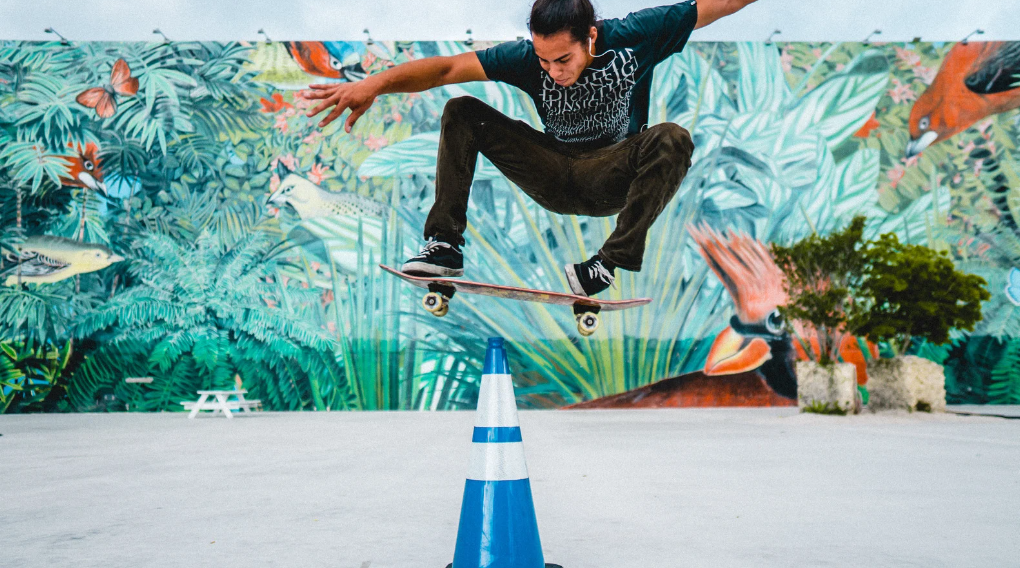
Adjust your stance and see how different positions open up a range of creative possibilities.
Overcoming Obstacles
Depending on your settings, if you're skating at a skatepark, the variety of obstacles present can add a level of difficulty to performing kickflips. Begin by mastering your kickflips on flat ground before progressing to more complex terrain.
As you gain confidence, approach smaller obstacles such as curbs or low rails, and incrementally challenge yourself with larger ones.
Adding Style and Flair
Once you've got the basic kickflip down, it's time to start adding some style and flair. Try experimenting with different foot positions, or adding a grab or tweak to your kickflip. You can also try incorporating kickflips into your freestyle routine for an added challenge.
As you progress in your skateboarding skills, trying out new maneuvers like the kickflip can be thrilling. It's essential, however, to ensure that the tricks you attempt are 'age appropriate if relevant,' meaning that they align with your physical abilities and safety requirements.
Younger skaters should focus on building fundamental skills before advancing to complex tricks like the kickflip, and always under proper supervision.
Remember, the key to mastering the kickflip is practice, practice, practice. Don't be discouraged if it takes you a while to get the hang of it – with time and dedication, you'll be kicking those flips like a pro in no time!
Choosing the Right Skateboard
Choosing the right trick skateboard is crucial for kickflipping. There are many factors to consider, including the size of the board, the type of trucks, and the hardness of the wheels. The right skateboard can make all the difference when it comes to landing your kickflip.
When it comes to board size, it's important to choose a board that is comfortable for you. A board that is too small or too big can make it difficult to execute your tricks. The trucks are also important - they should be tight enough to provide stability, but loose enough to allow for easy turning.
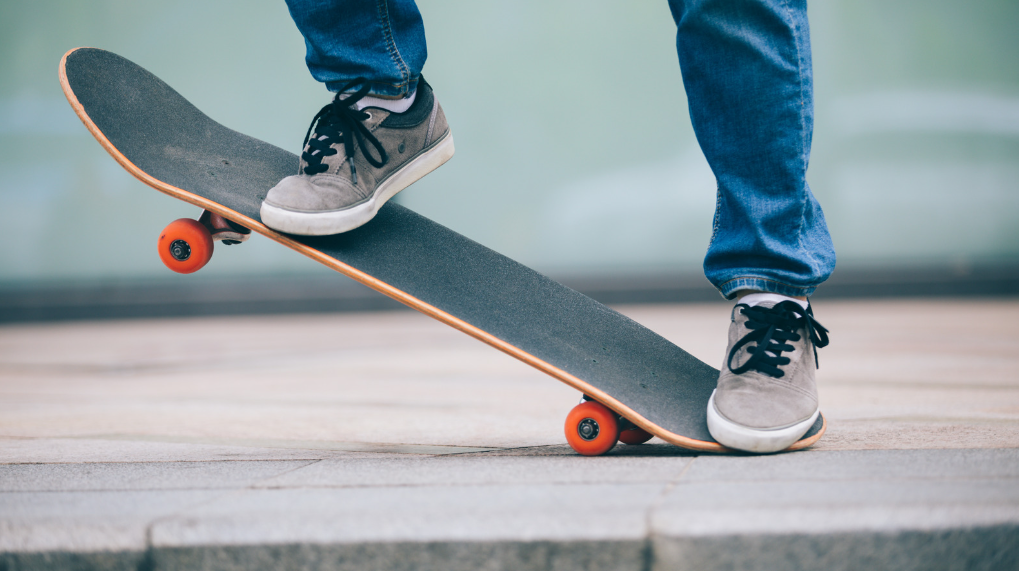
Finally, the hardness of the wheels is another important factor to consider. Harder wheels offer the resilience and responsiveness needed for technical street skating, where flip tricks are common.
Softer wheels, conversely, are better suited for cruising and carving on rougher surfaces due to their ability to absorb more shock and provide a smoother ride. Choosing the right wheels is crucial to align with your preferred style of skating.
Social media has had a huge impact on kickflipping, making it easier than ever to share our skills with the world. Choosing the right skateboard is also crucial for kickflipping success. By following these tips, we can continue to push the boundaries of what is possible in the world of skateboarding.
Frequently Asked Questions
What are some tips for landing a kickflip consistently?
When executing a kickflip, it's not only the positioning of your feet that's crucial but also the height of your jump. Ensure you jump high enough to allow the board to complete its flip. Your front foot is particularly vital in flipping the skateboard.
As you jump and initiate the kickflip motion, focus on the height of your jump while maintaining balance and control. After the board flips, bring your front foot back down to catch it as it completes its rotation.
This will help you secure the landing with both feet squarely on the board. Ensure that your shoulders remain aligned parallel to the board and your body's weight is evenly distributed over the skateboard. As your confidence grows, aim to perform the kickflip with increased velocity and elevation.
How can I improve my kickflip speed?
To enhance the quality of your kickflip and increase its speed, pay close attention to the placement of your front foot, ensuring it is in the optimal position for executing the trick. The flicking motion is crucial—use the side of your foot for a precise flick. With practice, aim to flick the board with more force and speed, which will contribute to a faster and smoother kickflip.
What are some common mistakes to avoid when learning to kickflip?
One common mistake is not committing to the trick. It's important to fully commit to the kickflip and not be afraid of falling. Another mistake is not keeping your shoulders level, which can cause the board to turn or spin in the wrong direction. Finally, make sure you're flicking the board with the correct part of your foot and not just kicking it.
Are there any exercises I can do to help with my kickflip technique?
To measure the effectiveness of your practice sessions, start with stationary kickflips to get comfortable with the motion and placement. Then, practice kickflips while rolling slowly, gradually increasing your speed as you gain confidence, using your consistency and success rate as metrics for improvement.
What are some variations of the kickflip that I can try?
When performing a kickflip or its variations like the heelflip, varial kickflip, and double kickflip, the placement and motion of the front foot are crucial. It's important to have precise control over your front foot's flicking motion, as well as how it interacts with the skateboard's grip tape to facilitate the flip. Ensure you're comfortable with the technique in the basic kickflip before trying out these more advanced variations.
How can I overcome fear when attempting a kickflip for the first time?
It's natural to feel nervous when attempting a new trick, but remember that falling is a normal part of the learning process. Start by practicing stationary kickflips and gradually work your way up to rolling kickflips. It can also help to have a friend spot you or give you encouragement. Moreover, to track outages and protect yourself, consider keeping a progress journal and always wear protective gear.
